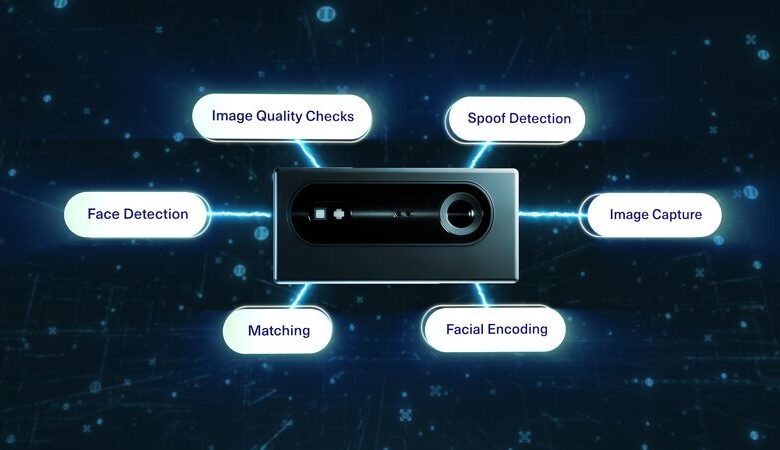
As the digital landscape evolves, security threats are becoming increasingly sophisticated and driving the need for more advanced solutions to protect identities and access systems.
Nowhere is identity protection more critical than in airports, where millions of people navigate daily through complex, multi-layered checkpoints that must balance rigorous security protocols with the need for efficient, secure and seamless passenger processing. Artificial intelligence (AI) is now being leveraged to enhance authentication, seamless access and identity verification in airports, providing the ideal balance between security, operational efficiencies and passenger convenience.
AI-driven innovations in biometrics
AI is revolutionizing the security and identity industry by embedding intelligent, automated capabilities across various solutions, particularly biometrics. The days of slow and cumbersome identity verification conducted by humans looking over one document at a time, leading to long lines and frustrated travelers, are steadily being replaced by technology.
Today’s technology enables travelers to move through airports quickly and effortlessly, eliminating the need for traditional friction points while maintaining robust security protocols. From touchless facial recognition at check-in to smooth boarding procedures that verify identity in seconds, these technologies create a more fluid, stress-free journey. Passengers benefit from dramatically reduced wait times and minimal document handling, while airports gain unprecedented accuracy in verifying traveler identities and detecting potential security risks before they manifest.
The true breakthrough comes in how these AI-powered systems learn and adapt to each individual passenger, creating personalized experiences that respect privacy while delivering enhanced security. This marriage of cutting-edge AI with thoughtful implementation is finally delivering on the promise of airports that are both more secure and more pleasant to navigate.
Modern biometric security solutions also benefit from AI-driven presentation attack detection (PAD), strengthening fingerprint and facial recognition technologies against sophisticated spoofing attempts.
Scalable AI-powered facial recognition technology: Your Face is your Credential
Now powered by AI, advanced biometric solutions, such as facial recognition, help enhance identity verification at airports to streamline passenger authentication while ensuring high security standards. Facial recognition is not only the most reliable, convenient way to authenticate and verify individuals by using something that’s always with us — our faces — it is also one of the most secure forms of verification.
It is crucial that the facial recognition system operates reliably and delivers accurate results — especially in mission-critical, “must always work” environments like airport security. To achieve this level of precision, AI and machine learning can be combined with multispectral imaging (MSI) technology to deliver fast, accurate matching in any environment — varied lighting, busy backgrounds, and diverse user demographics, heights and conditions — ensuring superior “in-the-wild” reliability.
Consider the following when leveraging AI for facial recognition systems:
- On-Device Biometric Processing: The AI system should perform comprehensive biometric processing directly on the camera, encompassing face detection, matching, identification, verification and passive liveness detection. This minimizes the transmission of sensitive biometric data, enhancing performance and data protection.
- Ethically Sourced and Diverse Training Data: The AI algorithms powering the facial recognition technology should be trained using ethically sourced, comprehensive datasets. These datasets must include billions of images representing a broad range of demographic characteristics, such as gender, skin tone, race and age. This ensures sufficient data diversity to mitigate potential facial recognition matching bias.
- Robust Performance in Varied Lighting Conditions: The technology should incorporate advanced multispectral imaging (MSI) technology fused with AI. This enables high-quality image capture and reliable performance even in challenging lighting environments, including total darkness, direct sunlight, backlit and gradient conditions.
Addressing data privacy, ethics and compliance in AI security
It’s important to note that with the rise of AI-driven security solutions comes the responsibility to uphold data privacy, ethical AI usage and regulatory compliance.
Privacy-by-design and security-by-design principles should be integrated across the product lifecycle, ensuring they align with global privacy regulations. These principles ensure that AI-powered solutions are designed with security at their core, rather than as an afterthought.
And, while many vendors do not manage customer data directly, they can offer tools that empower organizations to meet stringent compliance requirements.
For example, an organization’s global privacy policy outlines how it collects, uses and protects personal data worldwide, which helps reinforce trust in AI-powered identity solutions; while a clear AI use policy or internal AI guidelines can be implemented to govern responsible AI adoption and ensure compliance with ethical standards and legal frameworks. These types of guidelines ensure that AI applications do not inadvertently introduce biases, compromise user privacy or violate regulatory mandates.
AI is only as good as the data it is trained on. To mitigate risks related to biased algorithms and unintended discrimination, AI models must be tested with diverse datasets that reflect the real-world demographics and use cases of customers. This approach helps organizations comply with regulations such as the General Data Protection Regulation (GDPR) and other regional data protection laws while fostering trust among end-users.
As AI adoption accelerates, it is crucial to address ongoing concerns around data privacy and ethical AI usage to enable broader acceptance and deployment of AI-driven security technologies.
Pioneering the future of AI-powered security
By continuously innovating and integrating AI into security solutions, airports and government agencies in border control can stay ahead of emerging threats while enhancing operational efficiency.
When adopting AI-powered identity security solutions, these organizations should embark on a roadmap to a future where security is not just robust but also intelligent and adaptive. As AI-driven security solutions evolve, a seamless balance between security, usability and compliance is paramount.





